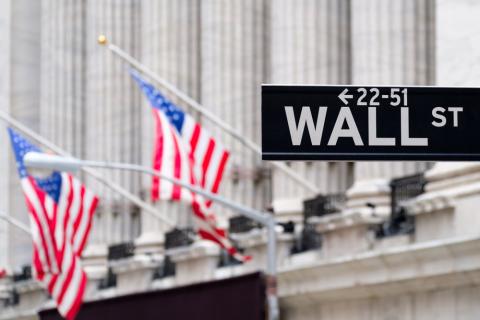You wouldn't notice it at all watching the mainstream television news media or reading mainstream newspapers. For some reason they haven't been too talkative about it, but this is the ten year anniversary of the Wall Street financial crisis that struck America and the world with devastating consequences for millions of people.
What happened in 2008 wasn't an overnight phenomenon. Indeed it may be helpful not to think of it as a crisis. The crisis occurred first, over years, many years of compromises and corrupt practices in the financial industry with the complicit support of the federal government. It was during this time throughout the '90s and into the '00s that the crisis occurred. It was then that something was at stake. That something could have been done about it.
The Wall Street financial crisis was the final result, all at once, of the American political and financial system's failure to meet the crisis with moral courage, succumbing instead to complacency, cynicism, and greed. The failure of several major global financial companies at this time was the market correcting the many years of compounding interest on the pricey debt of Wall Street's unscrupulous, feckless culture.
A glimmer of things to come was already evident during the economic boom of the 90s, inaugurated as many believed, by the election of Bill Clinton to the office of the presidency, the first candidate in the history of the Democratic Party to take as much money as he did from Wall Street and turn the Democratic Party into the modern machine of corporate cronyism that it is today along with the Republican party.
The New York Stock Exchange then was marred by such infamous Wall Street hoaxes as Centennial Technologies in 1996, followed in the dawning of the Bush Era by Enron and Arthur Anderson in 2001, WorldCom and Tyco International in 2002, and HealthSouth in 2003.
This was also when algorithmic high frequency trading came into use on Wall Street to fix prices and manipulate markets, turning an already fetid marsh of financial corruption into a monstrous machine of financial deception and fraud.
Then in 2007 and 2008 the Wall Street financial crisis was in full swing with the final result of the subprime mortgage scam– big banks running away with everyone's money, ripping the bottom out of the entire global economy and devastating home owners, shareholders, and the economic prospects of an entire generation.
Lehman Brothers collapsed ten years ago in 2008 and took the shareholders' money with it. Bear Stearns fell that same year to the same ignominious fate. And likewise in 2008 was AIG's billion dollar scandal, utterly shaking global confidence in New York's financial markets.
2008 was also the same year that Bernie Madoff made off with $18 billion worth of rich investors' money, many of them wealthy celebrities and business elites. Bernie Madoff was the chairman of the National Association of Securities Dealers. That's the largest independent regulator for the New York Stock Exchange. Its mission is "to protect investors by making sure the United States securities industry operates fairly and honestly."
So the guy in charge of protecting investors from fraud on the New York Stock Exchange was the biggest fraudster in its history. It too perfectly and painfully exemplifies the top down corruption of the American political and financial system. Many people are quick to blame unfettered capitalism and the free market for what happened, but the Wall Street financial industry is hardly an example of capitalism at work.
The American finance industry is one of the most heavily regulated sectors in the world, and there is a constantly revolving door of financial and political elites who move seamlessly back and forth between Washington and Wall Street. The free market was at work when these companies failed, when market actors evaluated them at their true worth: corrupt, fraudulent, scam, bankrupt, zero. The free market would have let them go out of business.
But Washington intervened in the economy and redistributed wealth to them and bailed them out, from a market that wouldn't have gone near these banks ever again with another investment. That's not capitalism. That's socialism, and an incredibly perverse version of it: a version that privatizes big Wall Street companies' profits, and socializes their billion dollar losses. Markets choose not to do business with companies that lose money, but Washington rewarded these companies for quite fraudulently losing their customers' money.
This was not an effort of either party in opposition to the other either. It was a bipartisan effort of the entrenched two party system. George Bush supported the TARP bailouts, and so did Nancy Pelosi. The 2008 presidential nominees of both parties, John McCain and Barack Obama, both voted for TARP as Senators while they were campaigning for president. That says a lot about who is really running the government in Washington, and it's not Main Street.
Not much has changed. Bernie Madoff went to prison for his ponzi scheme, but remember– he stole very rich people's money. Meanwhile in 2016, nearly a decade after the Wall Street financial crisis, the top campaign contributor to both Donald Trump and Hillary Clinton were both Wall Street hedge funds.
There are no easy answers to such a complex problem as this one, but it's obvious that Americans can't trust the two party system in Washington to solve this for them.
